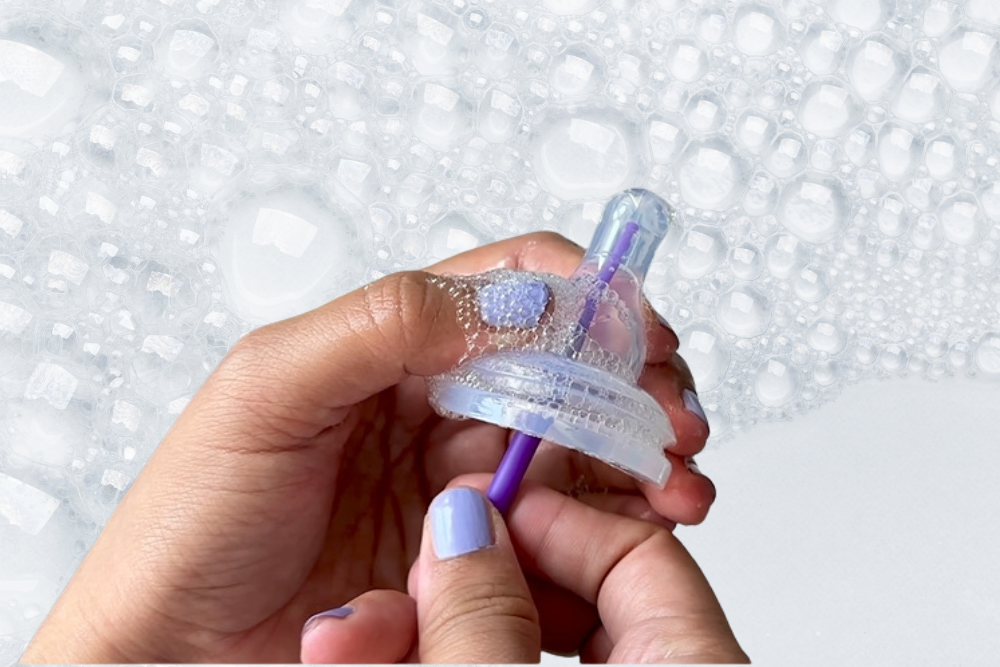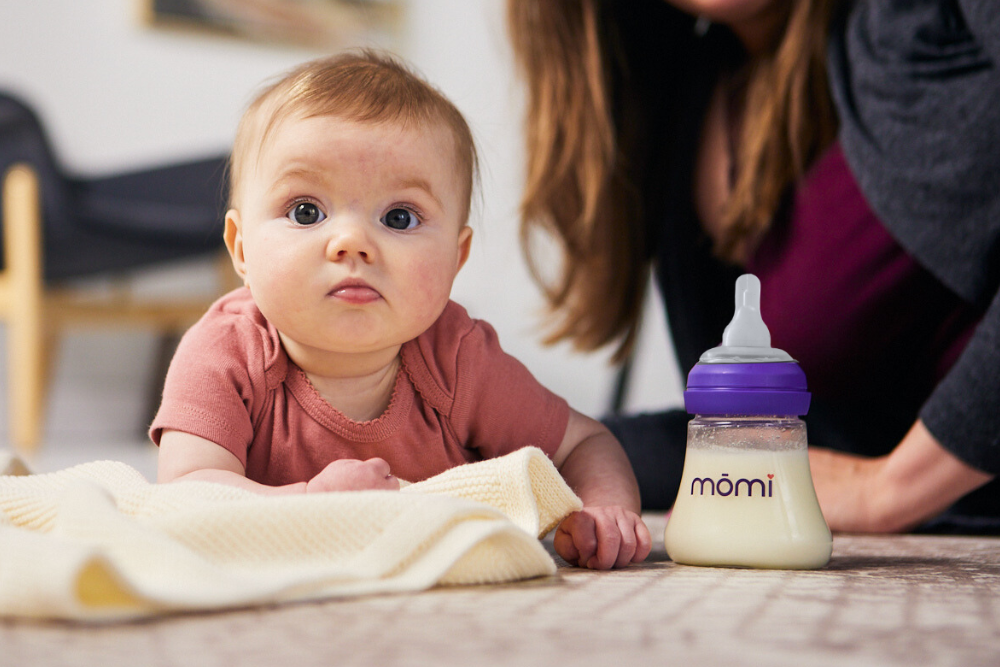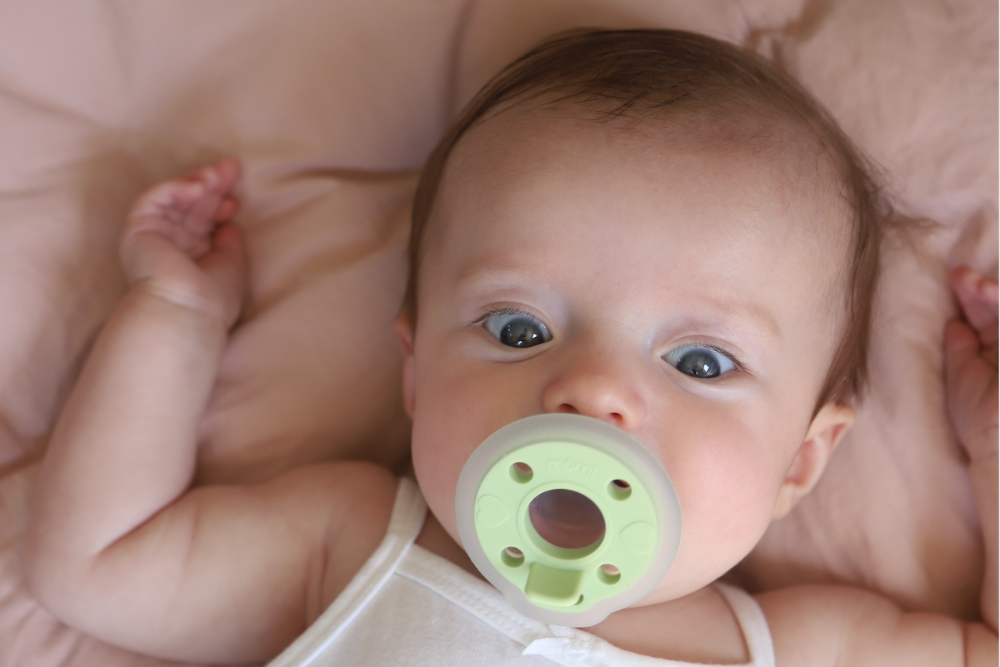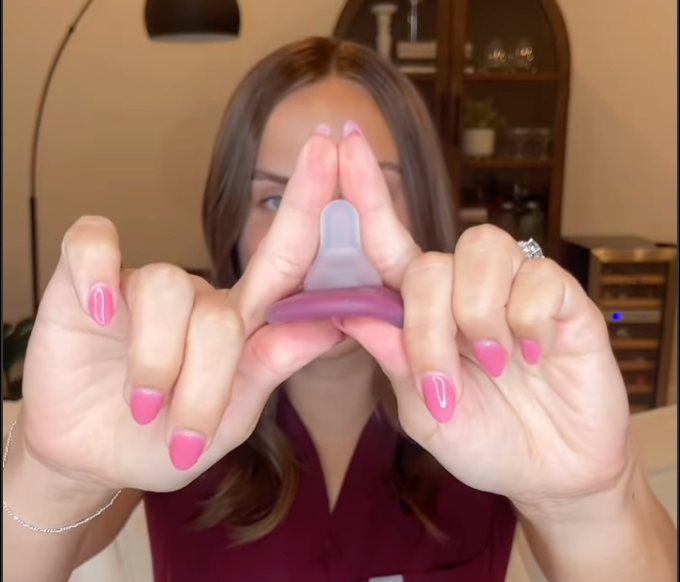Introducing your baby to the mōmi bottle can be an exciting step in your feeding journey. Whether you’re using anti-colic bottles for the first time or transitioning from breastfeeding, this guide will walk you through everything you need to know to get started. Learn how to assemble, clean, and sterilize your baby bottles properly to keep them safe and hygienic.
Contents
Before First Use: Cleaning & Sterilizing
Before using your mōmi bottle for the first time, it’s important to clean and sterilize your new infant bottles. The goal is for the entire surface area of each part to be sterile and free from bacteria.
-
Disassemble the Bottle
- Remove the clear cap.
- Unscrew the collar from the bottle.
- Take the nipple out of the collar.
-
Wash the Parts
- Use a bottle cleaner, such as a bottle brush or sponge (reserved only for baby bottles), with warm, soapy water. Clean the bottle base, collar, and clear cap thoroughly with your bottle brush or sponge.
- Rinse all parts well and allow them to air dry.
- Gently clean the anti-colic bottle nipple with the same bottle brush, paying special attention to the anti-colic vent. Use gentle hands to avoid damaging it.
- Use mōmi’s cleaning tool for the central duct of the nipple. Insert the cleaning tool into the duct a few times, ensuring it goes all the way through.
- All of mōmi’s parts are dishwasher safe. If you're using the dishwasher, always clean the nipple’s central duct with the nipple cleaning tool.
-
Sterilize with one of these methods:
- Boiling: To prolong the life of your baby bottle, this is mōmi’s preferred method for sterilizing. Fully submerge all disassembled bottle parts in a pot of boiling water for five minutes. Set a timer for five minutes. Use tongs to remove bottle parts from the water and let them air dry on a clean surface.
- Steam Sterilizer: You can use a steam sterilizer designed for baby products.
- UV Sterilizer: mōmi bottles are safe for UV sterilizers.
- Dishwasher (Top Rack): mōmi parts can be cleaned in the dishwasher (top rack only). To effectively sterilize your baby bottles, make sure the temperature reaches at least 150°F (65.6°C).
Note: Avoid using microwave sterilizers for the purple cleaning tool.
When To Sterilize Baby Bottles
We recommend sterilizing your bottle before the first use. According to the CDC and national pediatricians, daily sterilization is important for:
- Babies younger than 3 months
- Premature infants
- Babies with a weakened immune system
For older, healthy babies, thorough cleaning after each use may be enough. Always check with your pediatrician for guidance.
How to Use the mōmi Cleaning Tool
Every mōmi bottle set comes with a specialized cleaning tool designed to maintain the nipple’s flow rate and ensure the silicone stays clean and safe. Watch our instructional video, or read how to use it:
- Before First Use:
- Insert the cleaning tool all the way through the central duct of the nipple a few times to ensure it’s properly clean.
- For Regular Cleaning:
- After every use, use the cleaning tool to gently clean the central duct of the nipple.
Important: Avoid inserting the cleaning tool or anything else into the anti-colic vent. This will help maintain the nipple's function and prevent damage.
Avoid using wire brushes or other abrasive tools that can damage the silicone. Stick with the mōmi cleaning tool and a soft sponge or bottle brush for all cleaning tasks.
Assembling the mōmi Bottle
-
Insert the Nipple into the Collar:
- Start with clean, dry bottle parts.
- Hold the tip of the nipple and gently pull it through the collar until it’s fully seated.
- Visually inspect the assembly—if there’s a gap between the nipple and the top of the collar, use your finger to press the nipple against the rim of the collar for a secure fit.
-
Attach the Collar to the Bottle:
- Once the nipple is properly seated, screw the collar onto the bottle base.
-
Feed Baby or Get Ready to Go:
- If feeding right away, the bottle is ready to use!
- If packing the bottle for later, cap the nipple with the clear cap to keep it clean.
After Every Use: Regular Cleaning
For baby’s safety, it’s crucial to properly clean the mōmi bottle after each feeding. We've made a quick video to show you how.
If you aren’t able to wash a bottle immediately after use, we recommend at least rinsing all the parts under running water.
-
Disassemble the Bottle:
- Remove the clear cap, unscrew the collar, and take the nipple out of the collar.
-
Wash Everything:
- Avoid prolonged soaking of the nipple.
- Use warm, soapy water and a bottle brush to clean all the bottle parts.
- Gently clean the nipple, using care around the anti-colic vent so as not to damage it.
- Use the mōmi cleaning tool to clean the central duct of the nipple.
- Your mōmi bottle parts are all safe to clean in the dishwasher, but the cleaning tool should always be used to ensure the central duct gets clean.
-
Sterilize As Needed:
If your baby is older than 3 months and healthy, according to the CDC you may no longer need to sterilize daily.
- Boiling: After cleaning, sterilize the bottle parts by boiling them in water for 5 minutes.
- Steam or UV Sterilizer: Alternatively, use a steam or UV sterilizer designed for baby products.
- Dishwasher (Top Rack): If you’re sure that your dishwasher temperature is high enough to sterilize effectively, place all parts in the top rack of your dishwasher. Many parents use a close-topped basket to hold any loose parts that might otherwise fall into the filter.
Always let the parts air dry thoroughly after sterilizing, as trapped moisture can foster mold growth.
Ready to offer the best bottle for newborns and infants?
Read our expert tips for introducing the bottle to your baby.




